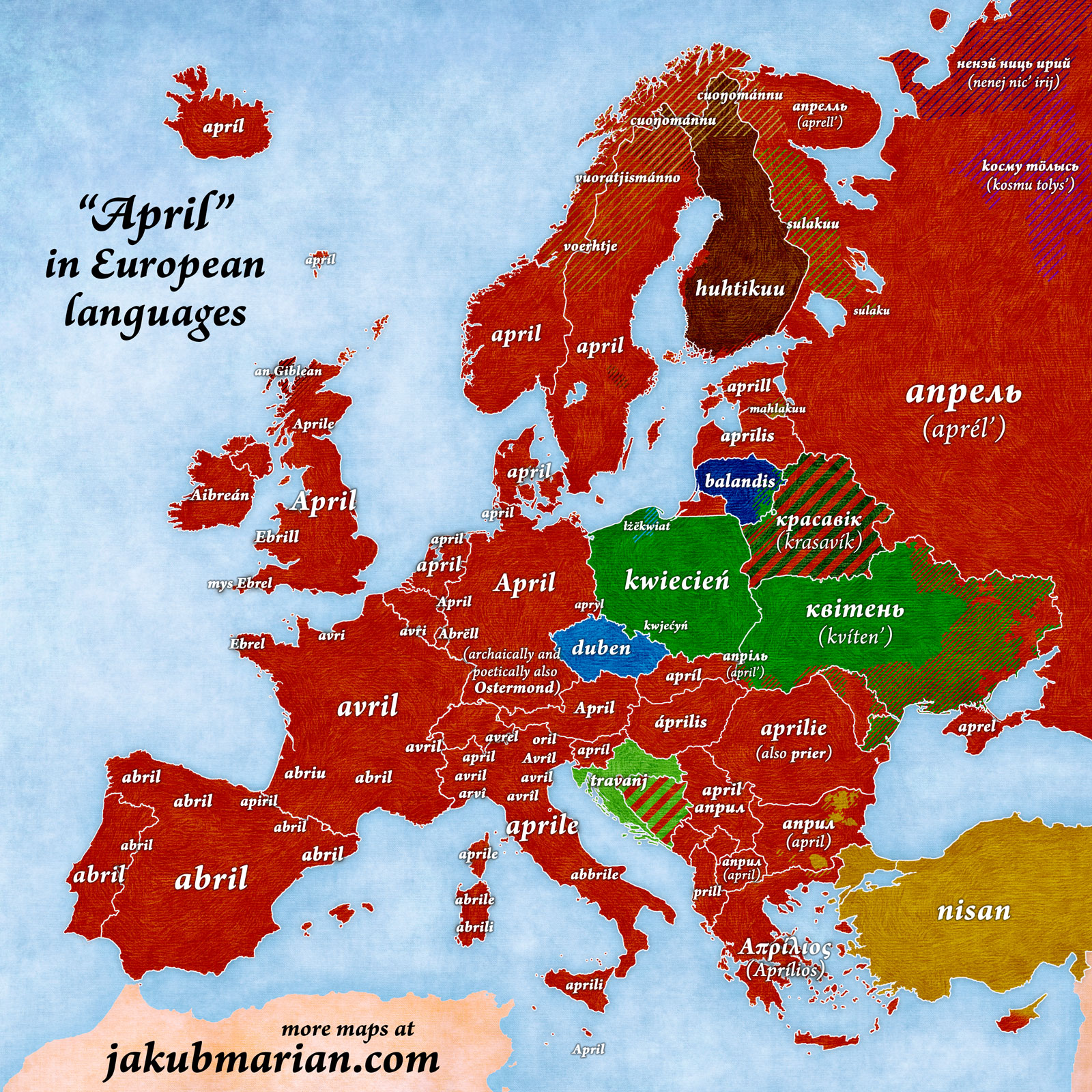The name of the fourth month of the Gregorian calendar in most European languages is derived from Latin Aprilis, the etymology of which is uncertain. One theory says that it is derived from the name Aphrodite, the Greek goddess of love. Another (less likely) one says that it comes from Latin aperire, “to open”. Either way, all words based on Latin Aprilis are shown on a red background in the map below:

Let’s take a look at some of the other etymologies. Polish kwiecień and Ukrainian kvíten’ come from a Slavic word meaning “to blossom” (and are false friends of Czech květen, which means “May”). Belarusian krasavík is derived either from krasa, “beauty”, or kraska, “field flower”. Czech duben is derived from dub, “oak”. Croatian travanj is related to trava, meaning “grass”.
Finnish huhtikuu comes from huhta (“cleared field in slash-and-burn cultivation”) + kuu (“month”). Voro mahlakuu means “juice/sap month”. Karelian sulaku is derived from sula, “molten; not having ice cover”. Northern Sami cuoŋománnu means “snow crust month”.
Lithuanian balandis means “dove” (a bird). Turkish nisan comes from Assyrian nisannu, “beginning”.
 Tip: Are you a non-native English speaker? I have just finished creating a
Tip: Are you a non-native English speaker? I have just finished creating a  Web App
Web App
